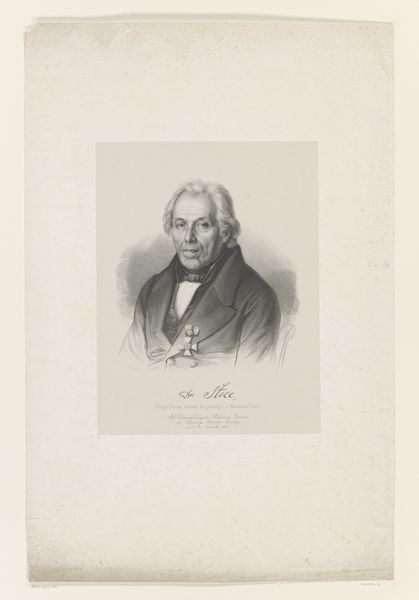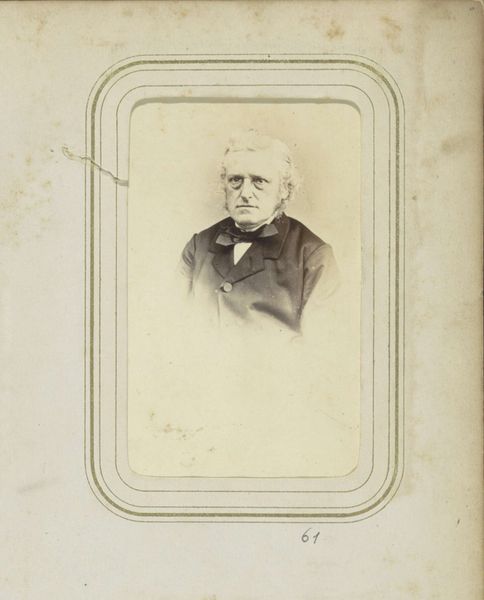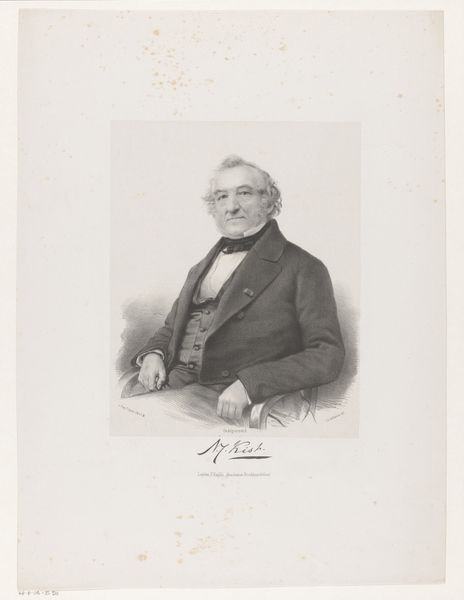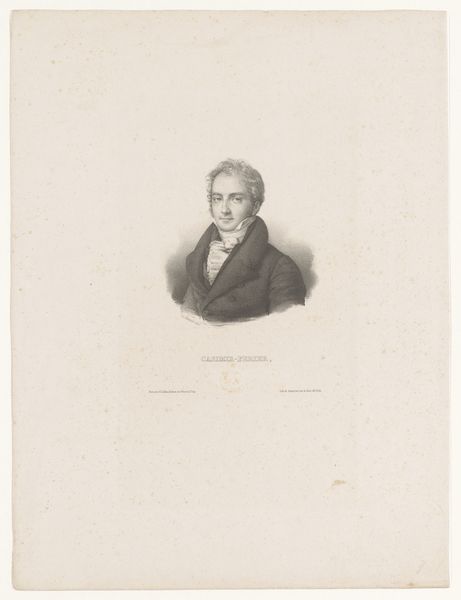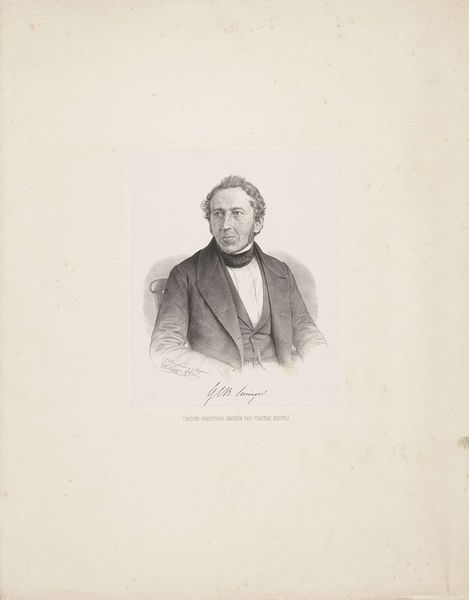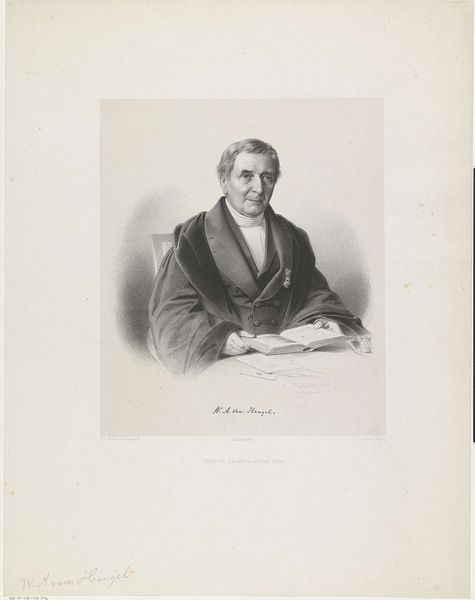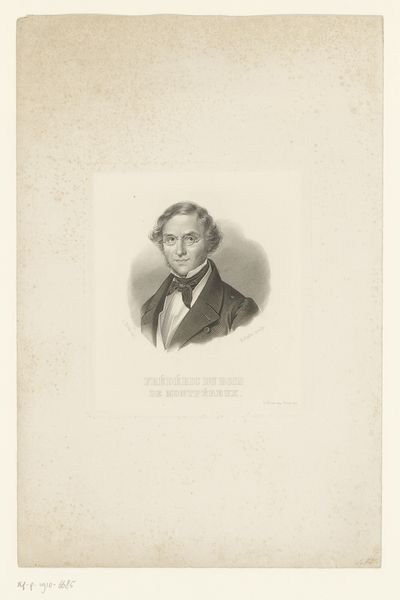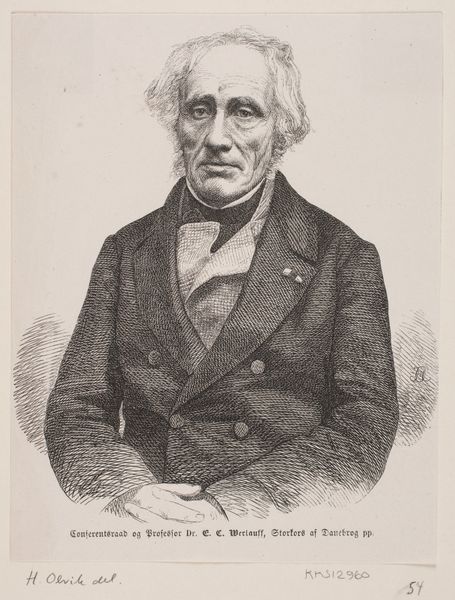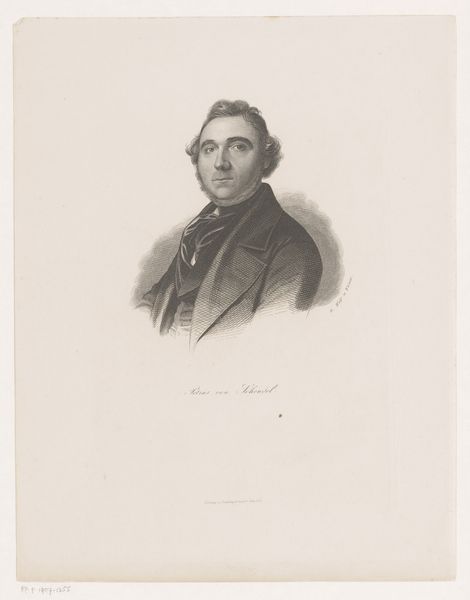
photography, gelatin-silver-print
#
portrait
#
photography
#
gelatin-silver-print
#
realism
Dimensions: height 224 mm, width 135 mm
Copyright: Rijks Museum: Open Domain
Editor: Here we have Robert Severin's "Portret van Gerrit Simons, kamerlid," a gelatin-silver print made sometime between 1860 and 1868. It's so...stark, yet somehow intimate. What stands out to you most about it? Curator: This print invites us to consider the democratization of portraiture. The shift from painted portraiture to photography altered production. This allowed access beyond the elite. This process changes the very notion of likeness and representation itself, don't you think? How does photography reshape class dynamics in portraiture at this time? Editor: That’s fascinating! I hadn’t really considered the social implications of photography becoming more accessible. The means of production, and who could now participate, certainly broadens the art world! How does Severin's work fit into this broader shift in material culture? Curator: Exactly! The reproducibility of photography allows for wider dissemination, effectively turning likeness into a commodity. What were the labor conditions of photographic studios like? And what materials did Severin and his team utilize? Who were they? These kinds of questions offer more than just formal analysis. Editor: I guess focusing on materials and labor gives a new level of analysis to something as seemingly simple as a portrait. I will start to look at all art in terms of these material conditions of production. Curator: Indeed. Focusing on those tangible elements grants us a far deeper understanding of the social and historical contexts of art.
Comments
No comments
Be the first to comment and join the conversation on the ultimate creative platform.
